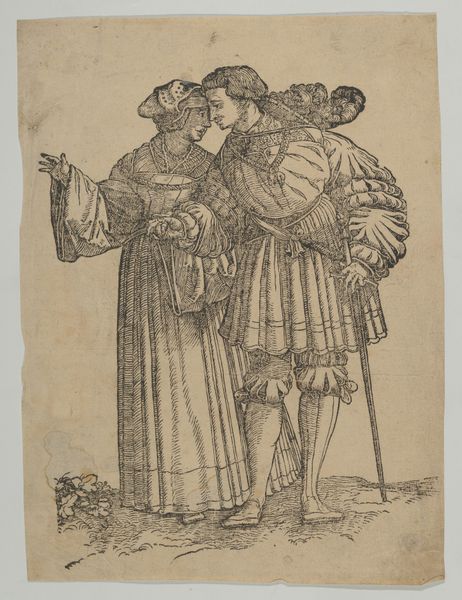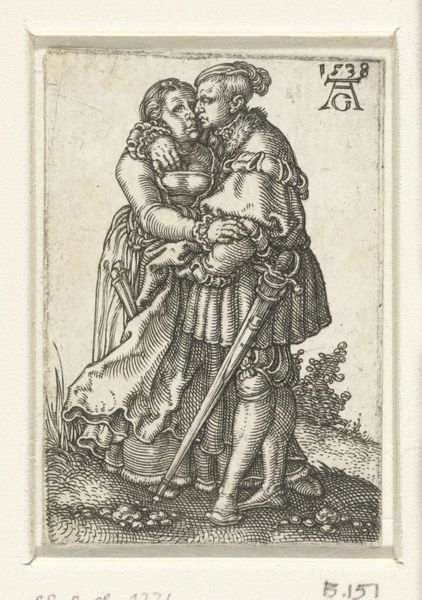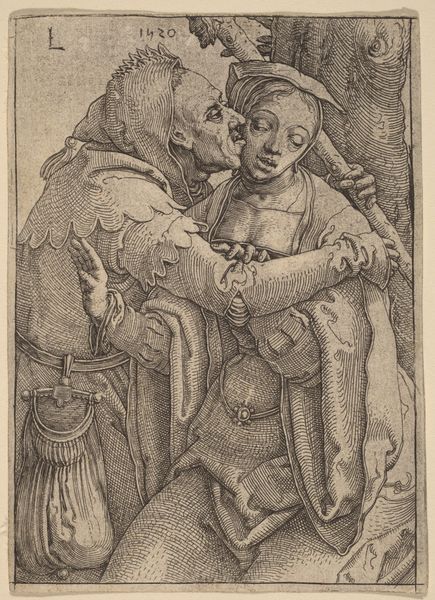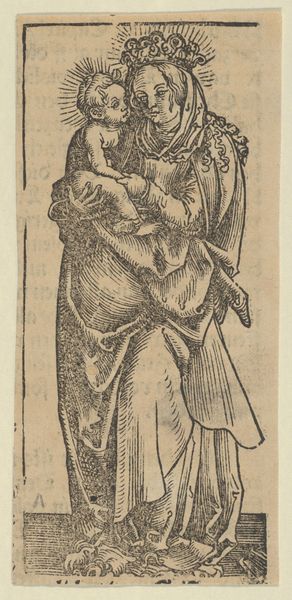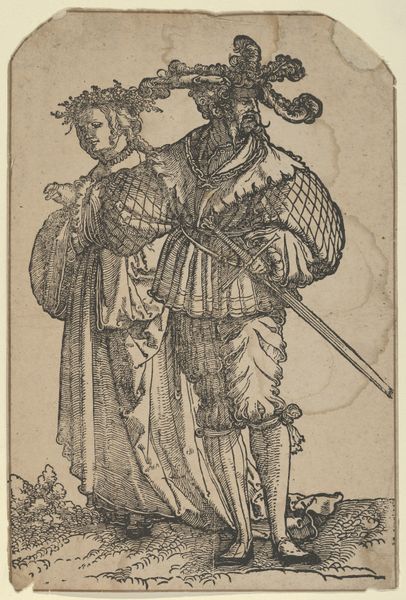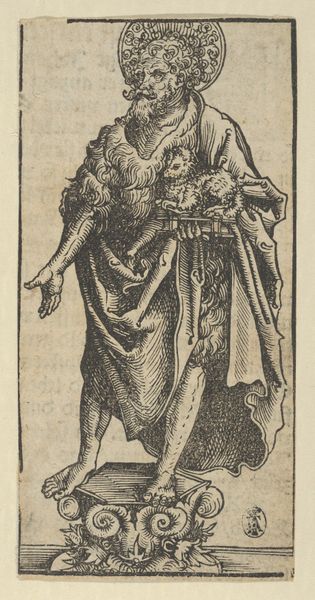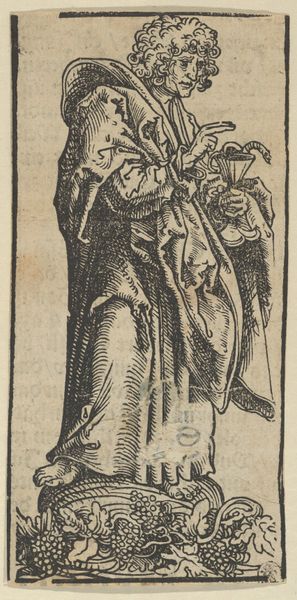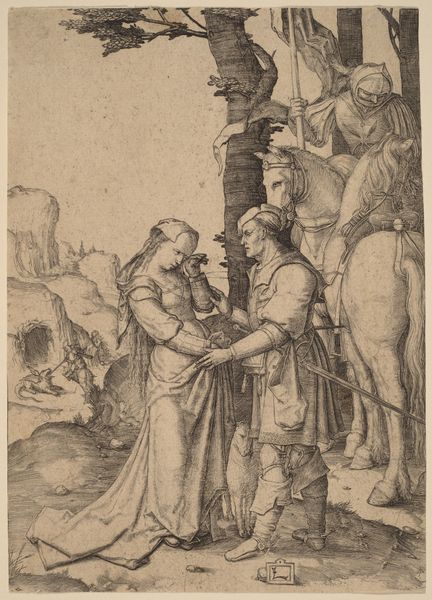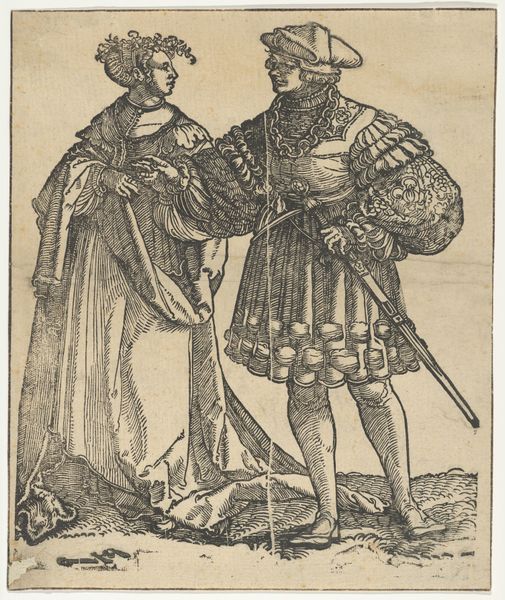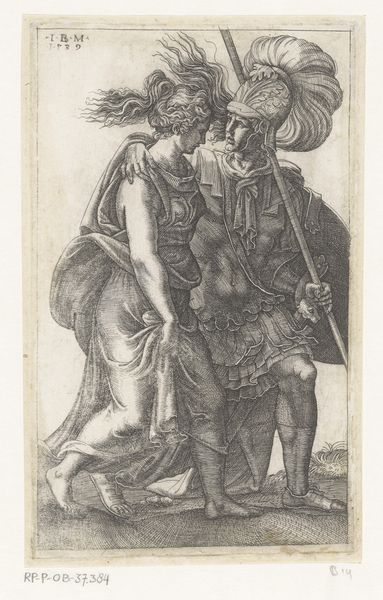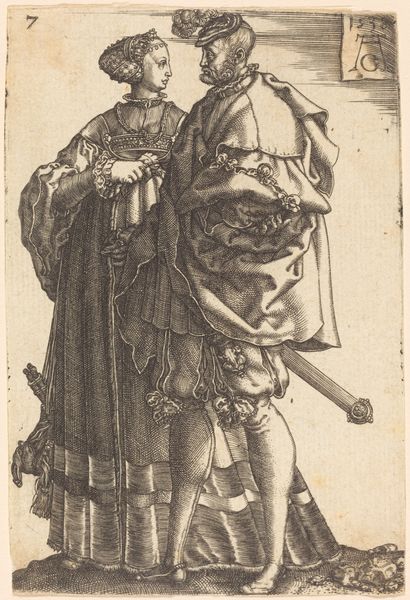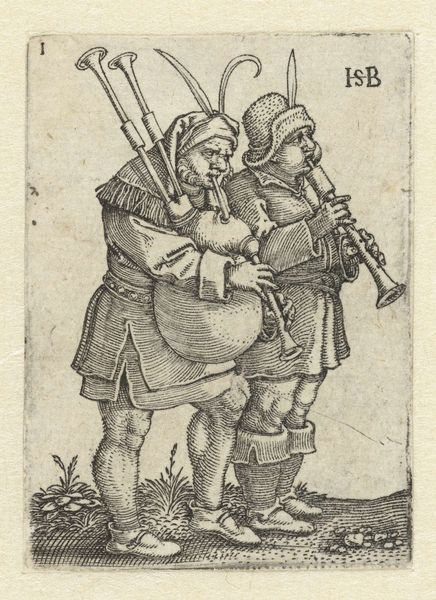
print, engraving
#
medieval
# print
#
pencil sketch
#
old engraving style
#
figuration
#
11_renaissance
#
pen-ink sketch
#
pen work
#
genre-painting
#
engraving
Dimensions: sheet: 6.1 x 4.6 cm (2 3/8 x 1 13/16 in.) mount: 11.6 x 18.4 cm (4 9/16 x 7 1/4 in.)
Copyright: National Gallery of Art: CC0 1.0
Curator: Immediately striking. There's a naivete, almost crude quality to this embrace depicted in the print. A strange, touching sincerity amidst the stiff figures. Editor: Indeed. What you’re observing is typical of Martin Treu’s work during the mid-16th century. This engraving, entitled "Embracing Couple," made around 1540, showcases a burgeoning interest in genre scenes, stepping away from purely religious or noble subjects. Curator: The embrace seems both tender and awkward. It's the detail in their attire that is so revealing. Her headscarf, his elaborate hat and sword. Are we to see them as peasants, or some sort of townspeople playing dress up? Editor: That tension is palpable. While it is true, his sword suggests a man of some standing or perhaps, aspiration, we must remember such symbols are fluid. This image appears to tap into a larger social discourse around shifting identities and blurring class lines, issues rife during the Reformation. Perhaps his elaborate hat and sword symbolize the new man. The headscarf maybe representing more traditional values. Curator: The M with what appears to be a backwards number 9 is such an oddity in the corner. What's the symbology behind this mark? Editor: The mark is not exactly identifiable. This calls upon the idea of alchemical processes and concepts of the Medieval Age in Northern and Central Europe. This symbolism adds more character to an already fascinating scene and begs further research! Curator: Considering the history of printmaking and distribution, one wonders what type of public engagement Treu anticipated from such intimate, somewhat clumsy depictions? Editor: Prints, especially those of genre scenes, were quite affordable and readily available. It likely circulated among a broad audience and this scene touches a place in our emotional core even now, all these centuries later. Treu gave visibility to a segment of the population rarely portrayed in art, which could reflect social ambitions of common men or stir an interest in that rising segment. Curator: In conclusion, it presents a captivating blend of personal emotion and social commentary. An awkward dance between old traditions and emerging individual desires and societal desires! Editor: It leaves one considering not just what's visible but also the veiled layers of identity and intent. Very intriguing.
Comments
No comments
Be the first to comment and join the conversation on the ultimate creative platform.
